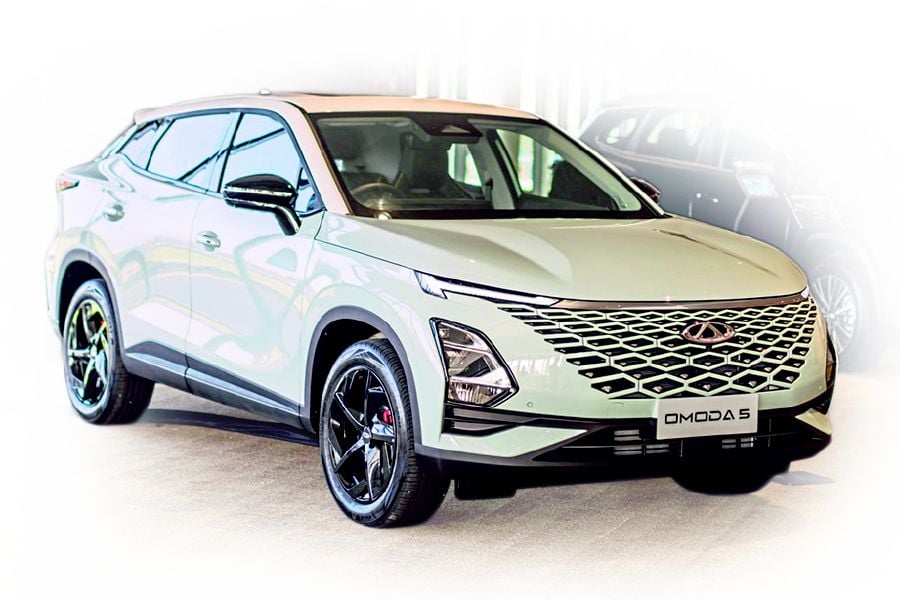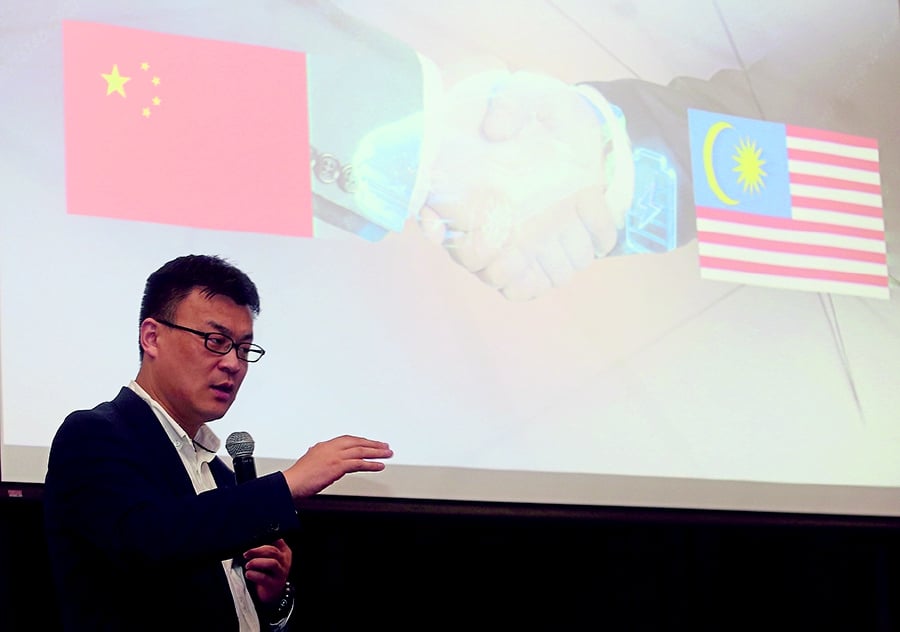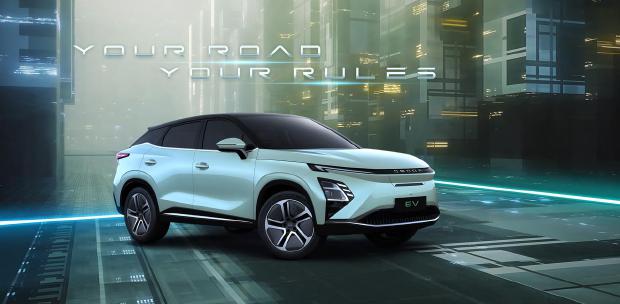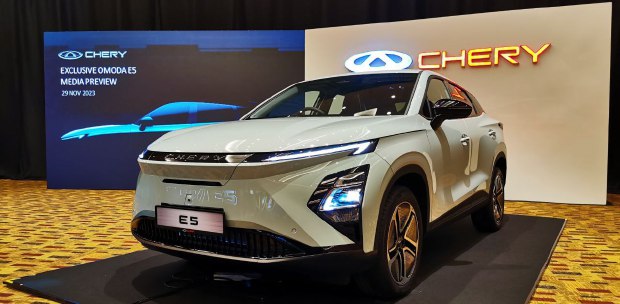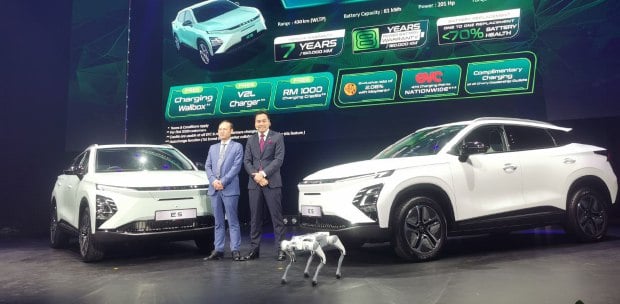IN October last year, Chery announced its plan to introduce two models with internal combustion engine or hybrid powertrain, with hardly any mention of electric vehicles (EVs).
However, due to the strong demand for BYD's Atto 3, the company has now decided to fast-track the introduction of its fully-electric Omoda 5.
In a briefing recently, Chery International executive vice-president Charlie Zhang announced that the company planned to launch the Omoda 5 in Malaysia in the third quarter or year end at the latest.
Initially, the company planned to make the Omoda internal combustion engine (ICE) and hybrid versions, along with the Tiggo 8 model, as its first offerings.
However, with BYD's successful launch of its Atto 3 (1,000 bookings within 10 days of its launch) and the government's call for more affordable EVs to be introduced, Chery may have been swayed into bringing its EVs to the market sooner.
When asked about the launch timeline for its electric Compact Crossover, Zhang said the Omoda 5 EV is expected to start production in China in September.
After that, it will take some time for homologation and testing for the Malaysian market before the official introduction.
To bring the company's EV plans in Malaysia into sharper focus, Zhang showed two all-electric models slated for launch in China later this year and how they may also make it to
Malaysia.
Built under its Exeed luxury nameplate, the company is working on a luxury sedan and a large sport utility vehicle (SUV), both with a range of up to 800km.
The sedan features the latest battery technology, connectivity, and user interface. It has a sleek design with a coefficient of drag of 0.21, airline-style reclining rear seats, and a configurable centre console that slides forward and back.
Zhang admitted that it would need time to cultivate the market and establish some familiarity with Chery products before entering a more premium segment in Malaysia.
Regarding its Malaysian entry, he revealed that the company is in the final stages of confirming a production partner for the Tiggo 8 and Omoda ICE variants in Malaysia.
However, he declined to disclose the name of the partner or the manufacturing location. Rumours suggest that the factory is located up north.
Interestingly, Zhang also stated that Chery was eager to introduce Plug-in Hybrid Electric Vehicles (PHEVs) to the Malaysian market and was considering producing variants with more than 100km of pure electric range.
He noted that this would enable most Malaysians to drive almost entirely on electric power during their daily commutes. According to data, the average Malaysian drives 70km to 80km per day.
However, he did concede that the plan to introduce PHEVs with big batteries would require much more detailed study, including incentives that it might be able to secure to make it a viable product.
At this moment, BEVs enjoy total import duty and road tax exemptions, while hybrids no longer receive such support from the government.
Zhang said pricing and product differentiation would be the key factors for introducing PHEVs into the market.
Currently, only premium brands are offering PHEVs in Malaysia due to the higher cost and complexity of the twin power plant arrangement. Chery is likely to price its products competitively against similar products from Japan and South Korea, which may price them out of the PHEV market.
Part of the reason why Chery is pushing for PHEVs in Malaysia may be due to the developments in the automotive market in China, where New Energy Vehicles (NEV) account for nearly 40 per cent of the total industry volume.
As the world transitions towards EVs, many markets will see an increase in demand for hybrid and PHEVs as buyers try to make sense of the new technology and match it with their risk aversion, practical considerations, budget and available charging infrastructure.
When asked about the EV market in China, Zhang said that by 2025, 50 per cent of the market would consist of BEVs and approach a near saturation point of 75 per cent by 2030.
This is an aggressive timeline but certainly in line with current trends where China's total car sales now consist of 10 per cent EVs and are likely to increase by at least 50 per cent this year.
According to Zhang, it is now quite rare to find Chinese buyers who is not considering buying a BEV for their next purchase.
"If you say that your next vehicle will be an ICE car, people may look at you strangely as someone who is backward," he added.
Earlier, Zhang showed videos of the new EV in digital rendering form and also the new factory that would build it.
The factory is highly automated and looks like it could be a completely jigless factory.
Chery is also investing heavily in chip design, which the company believes will be very important in the future as cars become more defined by their software and usability.
His view echoes those who say that the automobile industry is about to be disrupted by a wholesale change in the way that cars are consumed - their transition from being a mere mode of transportation into a mobile living space with multifunctionality and connectivity.
He also believed that autonomy might become a key service in the future, with owners choosing to subscribe to the capability for a determined period when it was useful and turning it off when they did not need it.
Chery is a significant player in the EV market in China but it is not one of the biggest players. According to data from the China Association of Automobile Manufacturers, the company sold more than 67,000 NEVs, both pure electric and plug-in hybrid models, in 2020, which placed it in the top 20 among all Chinese carmakers.
It lags behind companies like BYD, SAIC, and GAC, which each sold over 100,000 NEVs in 2020.
Nonetheless, Chery has been investing in EV technology and expanding its product lineup to capture a greater share of the growing EV market in China.
While achieving Level 4 autonomy by next year is an ambitious goal for Chery, it is not impossible. Several major carmakers and tech companies are also working towards achieving Level 4 autonomy in the next few years, and Chery has been heavily investing in autonomous driving technology.
However, it is important to note that Level 4 autonomy is a significant technological challenge and there are many regulatory and safety considerations that must be addressed before fully autonomous vehicles can be deployed on public roads.
It remains to be seen if Chery can meet its goal of achieving Level 4 autonomy by next year but the company's investment in the technology is a positive sign for the future of autonomous driving.


